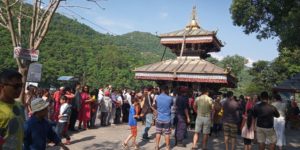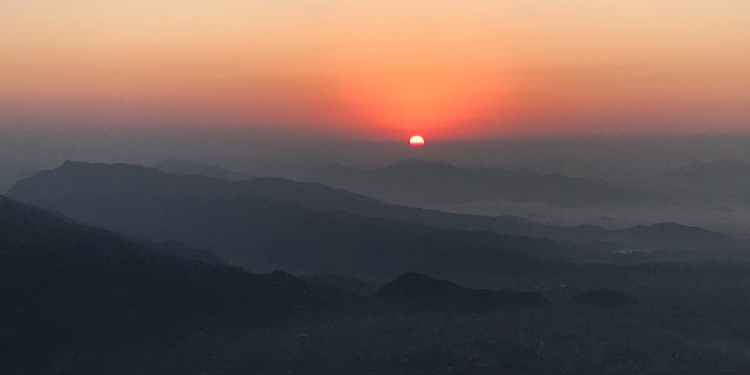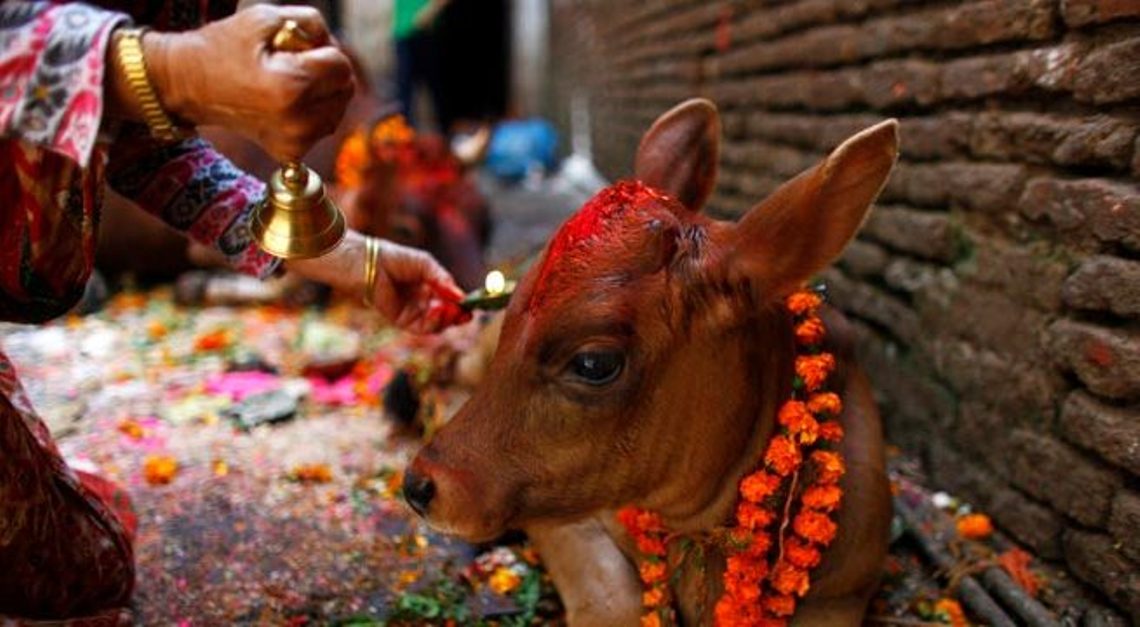11 Amazing Facts about Nepal
18 Jun 2024 Umesh Paneru

Nepal is a small beautiful land-locked country in South Asia bordered by Tibet (China) in the north and India in the east, west, and south. Nepal is a culturally and geographically diverse nation. Nepal with just an area of 1,47,516 sq. km. has a diverse elevation ranging between 59 m to 8848.86 m. Worldwide, Nepal is popular for mountaineering and trekking due to its Himalaya supremacy. Nepal has more than 1000 peaks including the world’s top 8 highest eighth-thousand mountains. The world’s highest mountain Mt. Everest is in Nepal at an elevation of 8848.86m.
Not only this, Nepal is the birthplace of Lord Buddha, the founder of Buddhism. Nepal has 10 UNESCO-listed World Heritage Sites among which 8 are cultural heritage sites that are aesthetically phenomenal. Natural biodiversity and cultural diversity in Nepal are its unique features. A secular and sovereign state Nepal surprises travelers with its amazing facts. Make your Nepal travel interesting by learning the 11 Amazing facts about Nepal which are listed as follows:

Nepal Tour- Kathmandu Chitwan Pokhara 9 Days

Kathmandu Pokhara Sunrise Tour 6 Days
Lord Buddha’s Birthplace
Many might be stunned to know that Lord Buddha was born in Nepal in Lumbini. It is the birthplace of Lord Buddha who founded Buddhism which is the world’s fourth-largest religion. Lumbini is listed as a UNESCO World Heritage Site.

Triangular National Flag
Nepal is the only nation in the world with a triangular national flag which sets Nepal distinct from all nations in the world. The flag is a combination of two single pennants with a crimson color on the bases and a blue color on the borders. Crimson is the national color of Nepal and symbolizes bravery while blue color symbolizes peace. In the flag, the upper part has an emblem of a crescent moon with visible eight rays, and in the lower part an emblem of a sun with twelve rays. The flag is used as both a state and civil flag.
Amazon of Asia
Nepal ranks 28th in terms of area in Asia among 48 nations. Despite being a small nation, Nepal is rich in biodiversity and ecosystem which is why it is crowned as the ‘Amazon of Asia’. The elevation of Nepal starts from 59 m and expands to 8848.86 m. Some strong points claiming Nepal as the Amazon of Asia are as follows:
- 692 butterfly species make up to 4.2% total of butterfly species in the world
- Around 9% of the world’s total bird species which constitutes 900 plus bird species
- 5980 variety of flowering plants make up to 2.4% of similar plants worldwide
- 250 species of endemic Nepal flowering plants
- 360 plus Orchid varieties which constitute 2% of the world’s orchid species
- Rare Blue Poppy Plant grows at an elevation of 5,400 m
- Home to one of the largest moths in the world i.e. Atlas Moth
Himalayan Supremacy
Nepal is a small land-locked country yet the Himalayan supremacy in the world is incredible. It has the world’s top 8 eight-thousanders highest mountains among 14 including the world’s highest Mount Everest. Numerous mountain lovers and trekkers travel to Nepal to adore the beauty of these mountains by trekking to the base camps or climbing mountains each year globally. Nepal is the nation with the highest number of mountains and peaks in the world with 1,310 peaks above 6000 meters. Below is a list of 8 eight-thousanders in Nepal.
- Mount Everest (8,848.86 meters / 29,029.03 feet)
- Kanchenjunga (8,586 meters / 28,169 feet)
- Lhotse (8,516 meters / 27,940 feet)
- Makalu (8,485 meters / 27,838 feet)
- Cho Oyu (8,188 meters / 26,864 feet)
- Dhaulagiri I (8,167 meters / 26,795 feet)
- Manaslu (8,163 meters / 26,781 feet)
- Annapurna I (8,091 meters / 26,545 feet)

Living Goddess Kumari
Nepal is the only nation in the world where the living Goddess Kumari is worshipped as a deity representation. The tradition has been in practice since ancient times where a prepubescent virgin girl is chosen specifically from the Newar Buddhist family of Shakya clan in the Kathmandu city. She stays in Kumari Ghar in Kathmandu far from her family till her first menstruation. Only on a few occasions like Jatras (festivals), Kumari came out of that Kumari Ghar (house). There are Kumaris in Patan and Bhaktapur as well but mostly considered ‘Royal Kumari’, the living Goddess Kumari who stays in Kumari Ghar in Kathmandu.
Secular State and Cultural Diversity
Nepal is a multi-cultural, multi-lingual, multi-religious, and multi-racial nation which gives testament as a secular state. This small nation is rich in cultural diversity with 142 ethnic groups, 124 languages, and 10 religions. Hinduism is the prominent religion yet all other religions are equally fostered in society which is proof of co-existence and harmony. Diverse ethnic group means diverse cultures which have their uniqueness and the best part is they all are still in practice preserving their legacy.
Diverse Nepalese Cuisine
Nepal is both geographically and culturally diverse which means we can find a heavy influence in Nepalese cuisine. There are diverse Nepalese cuisines representing ethnicity each one is unique from one culture to another. The uniqueness of Nepalese cuisine is its taste and type due to its flavor and the topography, climate, and alluvial soil where crops are grown. Nepalese cuisine is one of the best cuisines with different flavors, spices, and cooking methods. Nepalese Dal-Bhat is a staple diet and some other popular cuisines in Nepal are Newari (Samay Baji set, Bara, Chhoila, Yomari, etc.), Tibetan (Mo: Mo, Thukpa, Butter Tea, etc.), Lohorung (Chamre, Dibu, etc.), Limbu (Kinema, Yangben, etc.), Madheshi (Maithili, Bhojpuri, Tharu, Mughlai cuisines), Thakali foods, etc. Home-made local alcohols are another highlight of Nepalese cuisine.

Festivals
We know that Nepal is culturally diverse and here people can witness more than 50 festivals annually. All ethnicities celebrate their cultural festivals grandly and also participate in other cultures’ festivals with great happiness. The religious and ethnic harmony during the festivals is one of the prime attractions in Nepal. Some notable festivals in Nepal are Dashain, Tihar, Holi, Buddha Jayanti, Rato Machhindranath Jatra, Bisket Jatra, Lhosar, Maghe Sankranti, Chhath, Eid, Christmas, etc.
Sovereign Nation
Nepal has remained a sovereign state which means no colonization or invasion by external forces since its existence. It is a prideful moment for all Nepalese as it proves the bravery of our ancestors to protect Nepal from external forces. Nepal is among only a few sovereign nations which have not been under dictatorship and Nepal has maintained her own identity.
Cow Killing Illegal
The cow is the national animal of Nepal. The cultural and religious values are deeply integrated. Hence, cow killing is illegal in Nepal. Beef is also banned and cannot be found anywhere in Nepal.

Unique Calendars (Bikram Sambat and Nepal Sambat)
Nepal uses Bikram Sambat (B.S.) as a calendar. This Hindu calendar is based on the solar calendar which is generally 56 years and 8½ months ahead of the Gregorian calendar. Nepal Sambat is also an accepted and practiced calendar in Nepal which is the only calendar to be named after the country’s name. Nepal Sambat is a lunisolar calendar specially used by the Newar ethnicity. This calendar is used for festival celebrations and ritual observations. Currently, the year running is 2024 AD as per the Gregorian calendar, 2081 B.S. as per the Bikram Sambat, and 1144 as per the Nepal Sambat.







